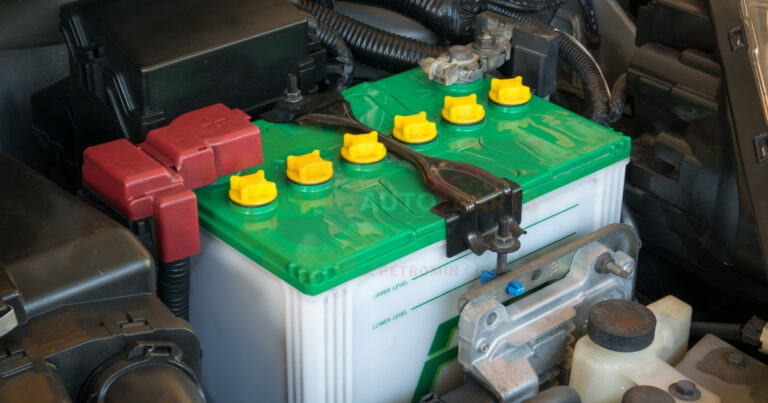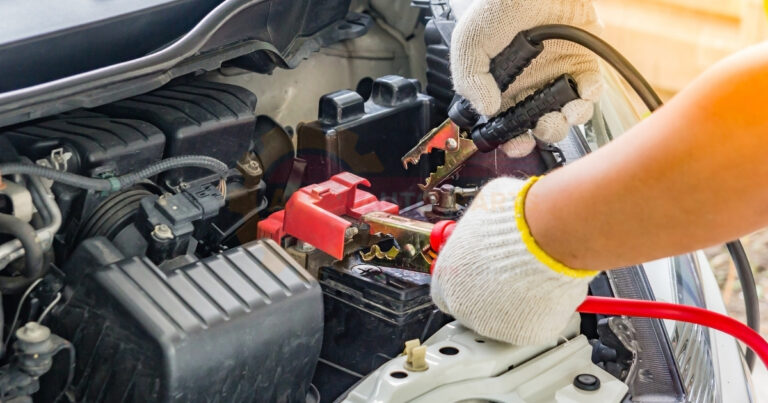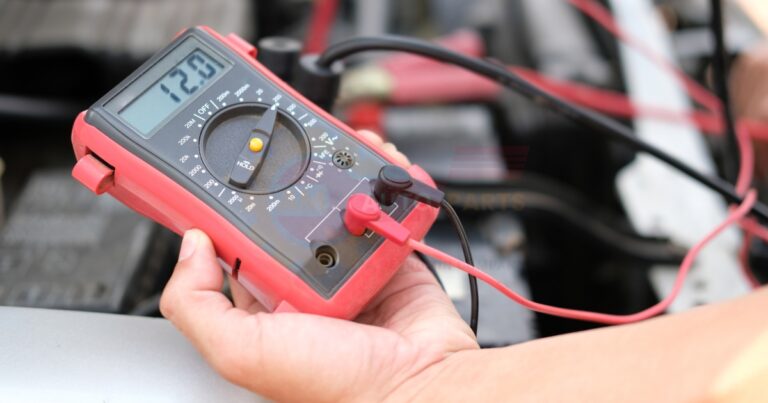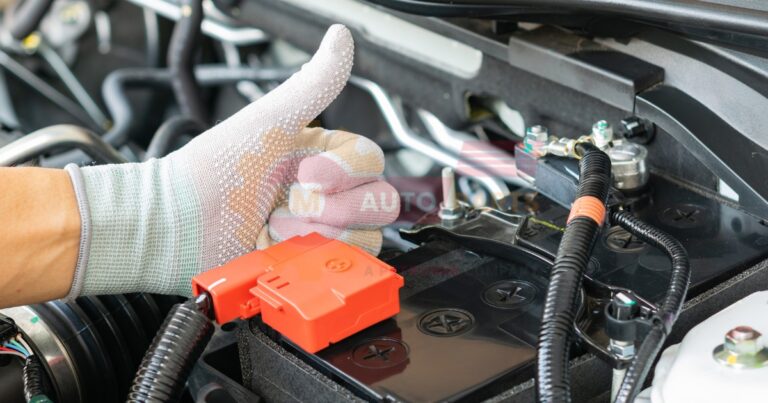How Car Battery Dies: Understanding the Causes and Prevention
Car batteries are the heart of your vehicle’s electrical system, providing the necessary power to start the engine and run various components. Understanding how car battery dies and how your car battery dies can help you prevent unexpected breakdowns and extend the life of your battery. In this article, we’ll explore the common reasons for car battery failure, the impact of driving habits, signs of a dying battery, and tips for extending your battery’s lifespan.
Common Reasons for Car Battery Failure
Leaving Headlights On
One of the most common reasons for a dead car battery is leaving the headlights on. When the engine is off, the battery is the sole power source for the lights, and prolonged use can drain it completely. This is especially true for older vehicles without automatic shut-off features.
- Always double-check that your headlights are off before leaving your car.
- Consider installing a battery saver or reminder system to alert you if the lights are left on.
Parasitic Draws from Electrical Components
Parasitic draws occur when electrical components continue to consume power even when the car is off. This can be due to faulty wiring, aftermarket accessories, or even a malfunctioning alarm system. Over time, these draws can deplete the battery.
- Regularly inspect your vehicle for any electrical issues.
- Disconnect unnecessary accessories when the car is not in use.
Loose or Corroded Battery Connections
Loose or corroded battery connections can prevent the battery from charging properly. Corrosion can build up on the terminals, creating resistance and reducing the battery’s efficiency. This can lead to a gradual decline in performance and eventual failure.
- Clean battery terminals regularly to prevent corrosion.
- Ensure all connections are tight and secure.
Extreme Weather Conditions
Extreme temperatures, both hot and cold, can significantly impact battery performance. Cold weather can slow down the chemical reactions inside the battery, while heat can accelerate wear and tear. Both conditions can lead to a shorter battery lifespan.
- Park your car in a garage or shaded area to protect it from extreme temperatures.
- Use a battery blanket or heater in cold climates to maintain optimal temperature.
The Impact of Driving Habits on Battery Life
Frequent Short Trips
Frequent short trips can prevent the battery from fully charging. Starting the engine requires a significant amount of power, and if the car is not driven long enough, the alternator may not have time to recharge the battery.
- Combine short trips into longer ones to allow the battery to recharge.
- Consider using a battery charger if you frequently take short trips.
Extended Periods of Inactivity
Leaving your car unused for extended periods can lead to battery discharge. Without regular use, the battery can lose its charge over time, especially if there are parasitic draws.
- Start your car at least once a week to keep the battery charged.
- Use a trickle charger to maintain the battery’s charge during long periods of inactivity.
Overcharging Due to Faulty Alternator
A faulty alternator can overcharge the battery, leading to excessive heat and damage. Overcharging can cause the battery to swell, leak, or even explode in severe cases.
- Regularly check the alternator’s performance to ensure it’s charging the battery correctly.
- Replace a faulty alternator promptly to prevent battery damage.
Signs Your Car Battery is Dying
Slow Engine Crank
A slow engine crank is often the first sign of a dying battery. If the engine takes longer than usual to start, it may indicate that the battery is losing its charge.
- Pay attention to any changes in the engine’s starting time.
- Have your battery tested if you notice a slow crank.
Dimming Headlights
Dimming headlights can be a sign that the battery is not providing enough power. This can occur when the battery is nearing the end of its life or if there are issues with the charging system.
- Check the brightness of your headlights regularly.
- Replace the battery if dimming persists despite a fully charged battery.
Electrical System Issues
Electrical system issues, such as malfunctioning power windows or radio, can indicate a weak battery. These problems can arise when the battery is unable to supply sufficient power to all components.
- Monitor the performance of your car’s electrical systems.
- Investigate any unusual behavior to determine if the battery is the cause.
How to Extend Your Car Battery’s Lifespan
Regular Maintenance and Cleaning
Regular maintenance and cleaning can help extend your battery’s lifespan. This includes checking the battery’s charge level, cleaning the terminals, and ensuring all connections are secure.
- Schedule regular battery inspections as part of your vehicle’s maintenance routine.
- Clean the battery terminals with a mixture of baking soda and water to prevent corrosion.
Proper Charging Techniques
Proper charging techniques can prevent overcharging and undercharging, both of which can damage the battery. Use a quality battery charger and follow the manufacturer’s instructions for charging.
- Avoid using fast chargers, as they can generate excessive heat.
- Charge the battery slowly and steadily to maintain its health.
Avoiding Excessive Drain
Avoiding excessive drain on the battery can help prolong its life. This includes turning off all electrical components when the engine is off and avoiding unnecessary use of power-hungry accessories. Battery removal guide Learn how to safely take out and replace the battery in your device with step-by-step instructions in this Extreme temperature fluctuations happen when the weather changes quickly from very hot to very cold or the other way around These big swings in temperature can be hard for people plants and animals to handle
Automotive power longevity refers to how long a car’s engine and battery can last Improving automotive power longevity helps vehicles run better for a longer time Car voltage levels Most cars use a 12-volt electrical system to power lights and other components while some electric vehicles have higher voltage systems for their motors and batteries
- Turn off lights, radio, and other accessories when the car is not running.
- Disconnect aftermarket accessories that may draw power when not in use.
When to Replace Your Car Battery
Age-Related Deterioration
Car batteries typically last between 3-5 years. As they age, their ability to hold a charge diminishes, leading to performance decline and eventual failure.
- Keep track of your battery’s age and replace it every 3-5 years.
- Consider replacing the battery sooner if you live in extreme climates.
Performance Decline
A noticeable decline in performance, such as slow engine crank or dimming headlights, can indicate that it’s time to replace the battery. Regular testing can help identify performance issues early.
- Test your battery’s charge level regularly to monitor its health.
- Replace the battery if performance issues persist despite regular maintenance.
Physical Damage
Physical damage, such as cracks or leaks, can compromise the battery’s integrity and lead to failure. Inspect the battery regularly for any signs of damage.
- Replace the battery immediately if you notice any physical damage.
- Handle the battery carefully to avoid accidental damage.
FAQ’s
How long does a car battery typically last?
Car batteries usually last between 3-5 years, depending on usage and maintenance. According to a study by Battery Council International, 70% of car batteries fail within 4 years. Regular maintenance and proper care can help extend the battery’s lifespan.
Can a car battery die suddenly without warning?
While car batteries often show signs of wear, they can sometimes fail abruptly due to internal short circuits or extreme temperature changes. It’s important to monitor your battery’s health and replace it before it fails unexpectedly.
What are the main factors that cause a car battery to die?
The main factors include age, extreme temperatures, frequent short trips, electrical system issues, and leaving lights or accessories on when the engine is off. Regular maintenance and mindful driving habits can help mitigate these factors.
How can I tell if my car battery is dying?
Signs of a dying battery include difficulty starting the engine, dimming headlights, electrical issues, and a swollen battery case. If you notice any of these signs, it’s important to have your battery tested and replaced if necessary.
Is it safe to drive with a dying car battery?
Driving with a dying battery can be risky, as it may leave you stranded or cause electrical system failures. It’s best to replace the battery promptly to ensure your vehicle’s reliability and safety.






